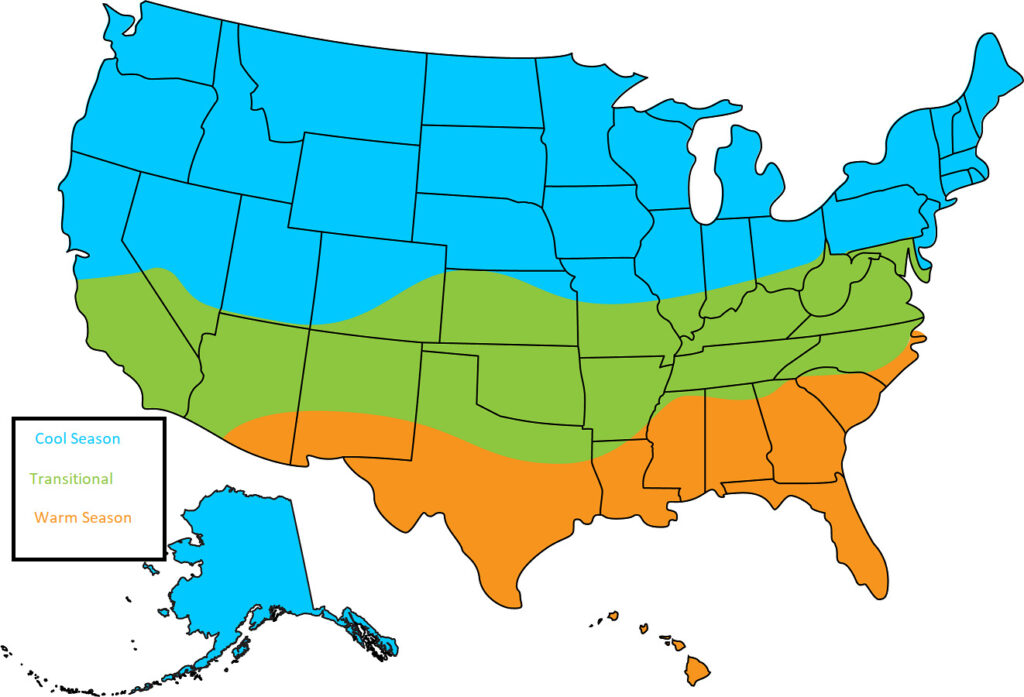Hi Neighbor,
Knowing your grass type is important and knowing which growing zone you live in is a good place to start. There are 3 zones of grass types: cool season, warm season, and transitional. Living in Wisconsin, I have cool-season grass which will be my focus throughout this blog. While the names are self-explanatory, you should know that if you are in a transition zone, you may have cool-season grass as well. Any grass type can grow there, but more often than not it is a type of cool-season grass.
In a cool-season lawn your turf will be made up of some combination of Kentucky blue, perennial rye, fine fescue, and tall fescue grass, each of which varies slightly in drought, foot traffic, heat, cold, and shade tolerance. Don’t worry if your lawn is a salad bar made of some grass but mostly weeds. We’ll attack those later.
Cool season grass types:

Kentucky bluegrass is easily identified by a main vein running down the middle of the leaf and its canoe-like tip. This grass will produce a nice dark green color and once established is known to spread out and be able to repair itself. This is a great grass to deal with constant foot traffic.
Perennial ryegrass is known as a fast-growing grass and is often mixed with bluegrass in grass seed blends. It can be difficult to distinguish this grass from bluegrass aside from its glossy leaf appearance and red/purple stem noted when pulling it up. This is a great grass to grow if you’re looking for a quick establishment.
Fine fescue grass is easily identified as it is has a fine leaf blade. It is best suited in shady areas of your yard. This grass can sometimes be a lighter green but when worked in around trees or other shardy areas, can help to fill in those hard-to-grow spots. Just be sure to mix in some of the other grass types as a pure fine fescue section will be easily noticeable.
Tall fescue grass is the most resilient of the grasses, able to stand up to heat, cold, and foot traffic. This has a wider leaf blade without a midrib or vein. This grass is often found in the transition zone but can also be used further north.
-Joe Tepp
“just your average Joe, not your average lawn”

